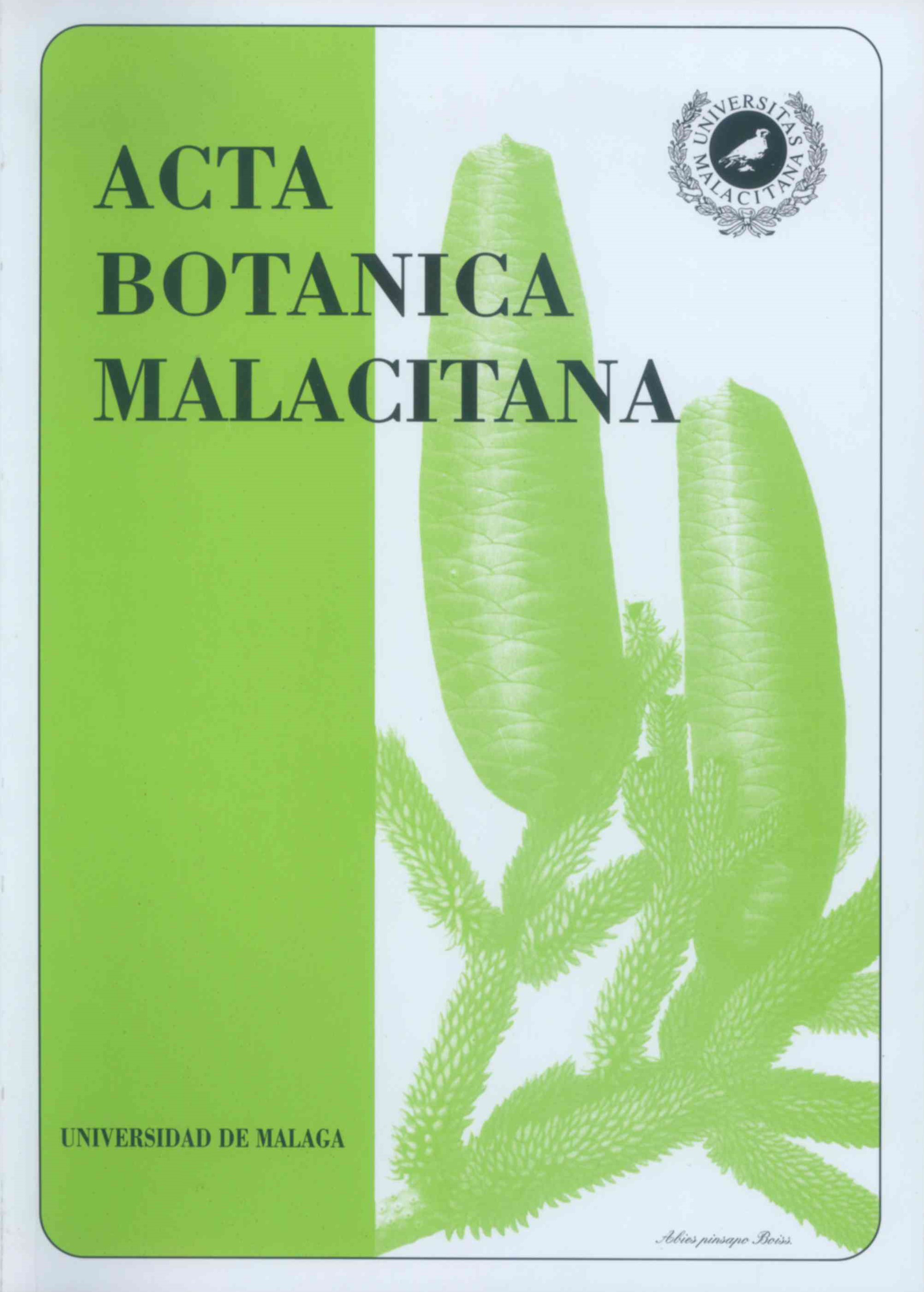Contribution to the study of honeys from Extremadura (Spain)
DOI:
https://doi.org/10.24310/abm.v20i.8833Keywords:
Honey, palynological analysis, Melissopalynology Extremadura, SpainAbstract
A contribution to the knowledge of honeys from Extremadura (Spain). 39 honey samples from the region of Extremadura (Spain) were analyzed, in which 90 morphological types of pollen were recognized. Eighteen honey samples showed a mixed floral origin while the remaining came from Eucalyptus camaldulensis, Lavandula stoechas Rosmarinus officinalis, Echium plantagineum and Retama sp.-Cytisus sp. type. The quantitative analysis showed that most of the samples contained from 100.000 to 500.000 pollen grains per 10 g. of honey. The high level of pollen in the samples from polliniferous plants is discussed.
Downloads
Metrics
References
AIRA-RODRÍGUEZ, Mi., P. RAMIL-REGO y M.P. SAA-MONTERO -1990- Identificación polínica de Ericaceae en mieles gallegas. Acta Bot. Malacitana , 15: 27-32.
DEVESA, J.A. -1992- Flora apícola, su interés y productos derivados: miel y polen. Actas de las Jornadas Técnicas sobre Obtención de Productos Ganaderos Naturales en el Ecosistema de la Dehesa, 1: 151-161. Zafra, Badajoz.
DEVESA, JA., P. ORTIZ y A. MUÑOZ -1987- Breve reseña histórica de la apicultura en España. Vida Apícola, 25: 63-65.
FERNÁNDEZ, I. y P.L. ORTIZ -1994- Pollen contamination of honey by bees inside the hive. 285.
FRADES, D. -1987- La apicultura extremeña Apuntes para su historia, 288 pp. S.E.Y.C.A. Badajoz.
GÓMEZ FERRERAS C. y C. SÁENZ DE RIVAS - 1980- Análisis polínico de las mieles de Cáceres. Anales Jard. Bol. Madrid, 36: 191-201.
LOUVEAUX J., A. MAURIZIO y G. VORWHOL. -1978- Methods of Melissopalynology.Bee World , 59 (4): 139-157.
MAURIZIO, A. -1971- Le spectre pollinique des miels luxembourgeois. Apidologie, 2 (3): 221- 238.
MONTERO, I. y A. MUÑOZ -1990- Análisis de mieles de la Sierra de Villuercas-lbores (Cáceres, España). Actas VII Simposio de Palinología (A.P.L.E.), 397-403. Granada.
MONTERO, I. y R. TORMO -1990a- Análisis polínico de mieles de cuatro zonas de montaña de Extremadura. Anales A.P.L.E., 5: 71-78.
MONTERO, I. y R. TORMO -1990b- Discriminación del origen geográfico de mieles de Extremadura por métodos estadísticos. Actas VIII Simp. Palinol. 397-403. Puerto de Santa Cruz (Tenerife, España).
SALA LLINARES, A. -1989- Mieles del Mediterráneo español. Vida Apícola , 37: 47- 51.
SERRA, B.J., A. GÓMEZ PAJUELO y F. GONELL GALINDO -1987- Composición, propiedades físico-químicas y espectro polínico de algunas mieles monoflorales españolas. Alimentaria, XXIV (185): 61-84.
SERRA, B.J. y S. CAÑAS LLORIA -1988- Caratteristiche fisico-chimiche, composizione e spettro pollinico del miele di Eucalipto (Eucalyptus spp.) prodotto in Spagna. Apicoltura, 4: 59-81.
TORRES NAVARRO, J. -1987- Censo apícola de Extremadura, 1986., 12 pp. S.E.Y.C.A. Badajoz.
VALDÉS, B., J. DÍEZ e I. FERNÁNDEZ -1987- Atlas polínico de Andalucía Occidental pp. 450. Instituto de Desarrollo Regional, Universidad de Sevilla, Excma. Diputación de Cádiz. Utrera (Sevilla).
VILADOMAT, J. -1982- La colmena Layens. Vida Apícola , 4:21-22.
Downloads
Published
How to Cite
Issue
Section
License
All information related to the licensing of published works in Acta Botanica Malacitana and copyright can be found in our Editorial Policy.







1.png)
